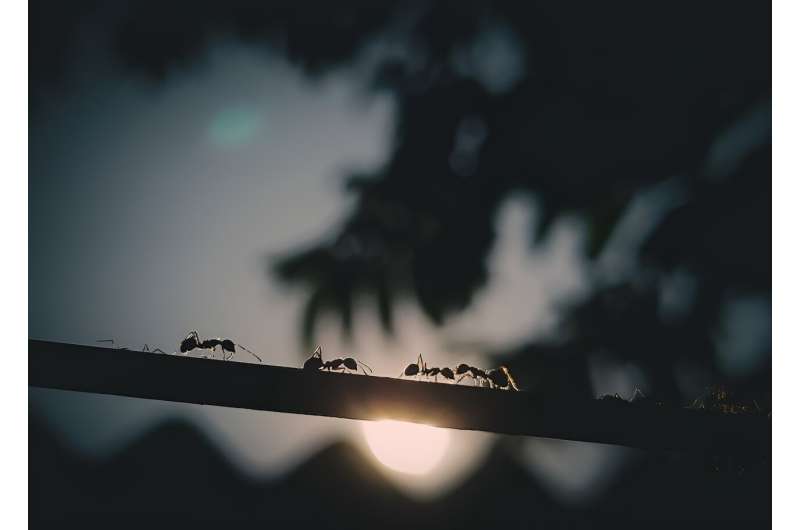This article has been reviewed according to Science X's editorial process and policies. Editors have highlighted the following attributes while ensuring the content's credibility:
fact-checked
peer-reviewed publication
trusted source
proofread
Study on cadavers shows ant activity can mislead investigators

Understanding ant activity on bodies can help us reconstruct the events that occurred at the time of death and during early post-mortem periods. For the first time, a study has been carried out looking at 10 real cases of ant activity on cadavers during the early post-mortem period.
The new research proposes a classification system to aid in identifying bloodstain patterns caused by ant activity. The study is published in the journal Forensic Sciences.
Although ant activity has been mostly reported as abrasions on decomposing bodies in the past, it has been found that ants can produce alterations that mimic active or recent hemorrhages, which can be misleading during investigations.
The proposed classifications could aid in identifying and describing ant-produced external hemorrhages, determining the body's original position and potential movement, and providing clues about the cause of death.
Lead author, Murdoch University's Dr. Paola Magni, says this new understanding of ant activity will help with the accuracy of future investigations.
"Forensic entomologists reconstruct criminal events using insects, with blowflies playing a significant role. However, ants are often overlooked as a mere incidental presence on a cadaver, and their importance can be missed by an untrained eye," Dr. Magni said.
"At the crime scene, fly spots from excrement and vomit can be mistaken for high-velocity blood splatter resulting from gunshots. A forensic entomologist can distinguish between gun-shot related evidence and insect-related marks by analyzing stain distribution and DNA from the stains.
"We now also know that ant activity should be considered as a potential cause of hemorrhage when the origin of the lesion is unclear, even in the absence of visible insects."
The study, conducted in the Andaman and Nicobar Islands in India, describes the 10 cases of post-mortem ant activity and analyses the resulting external hemorrhagic artifacts, which could have been misunderstood.
Dr. Magni says a new classification system will help develop wider understanding of the significance of insect ecology to enhance forensic investigations.
"Ultimately, the new classifications could improve the accuracy of reconstructing the events that occurred during the early post-mortem period, as well as the circumstances surrounding death," she said.
This area of research will be ongoing due to the changing nature of ants and insects as invasive species make their impact across the world.
"We continue to learn more about the impact of blowflies, beetles and ants in the post-mortem period—but ants in Australia are changing, so what does that mean for long term criminal investigations," Dr. Magni said.
"We are now looking into how these changes in species will have a different impact on cadavers as there will be ongoing implications in the forensic space."
More information: Yogesh Kumar et al, Haemorrhagic Artefacts Produced by Ant Activity on Human Cadavers in the Early Post-Mortem Period, Forensic Sciences (2023). DOI: 10.3390/forensicsci3030035
Journal information: Forensic Sciences
Provided by Murdoch University

















